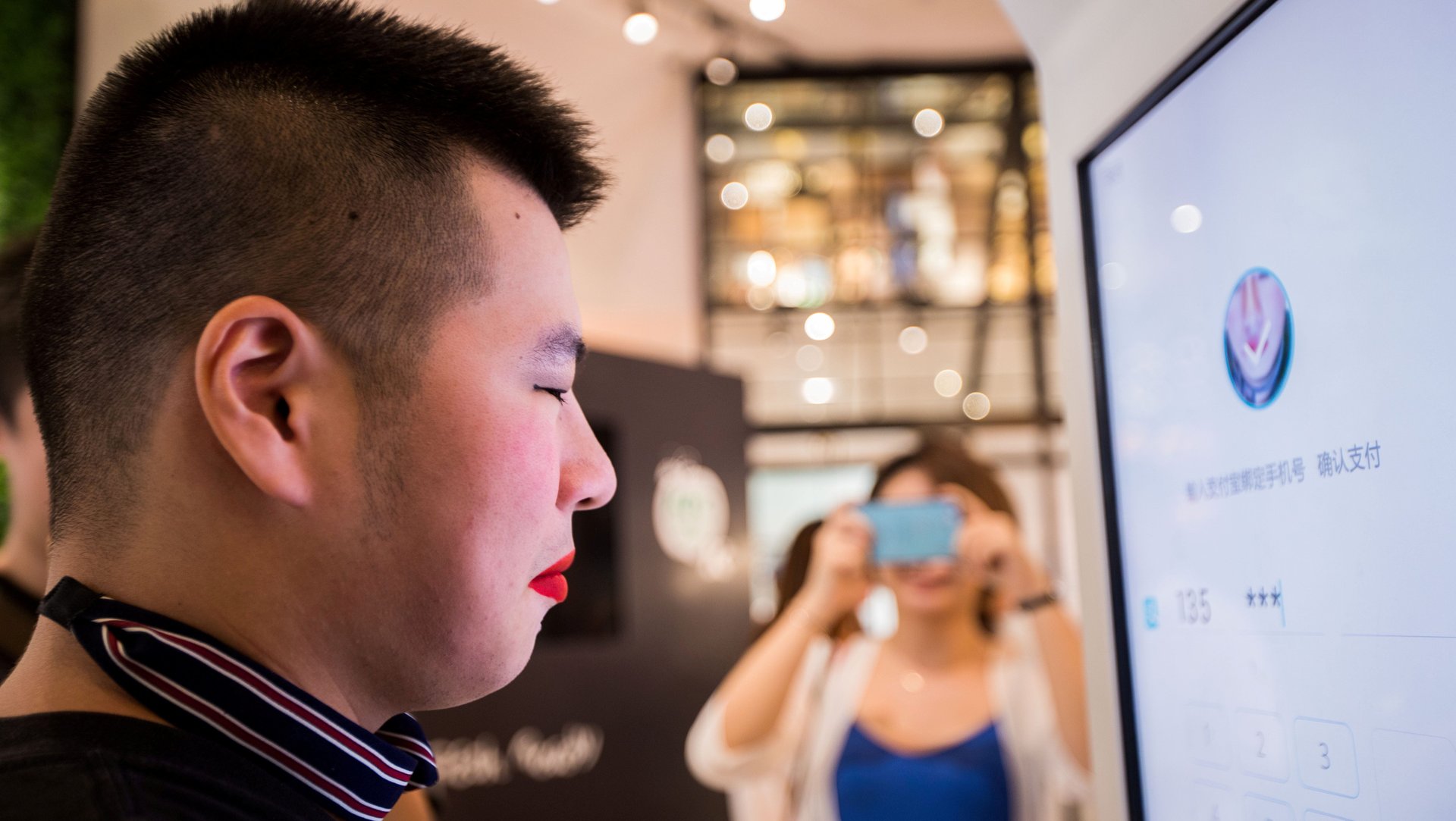China’s obsession with looking good is filtering into facial-recognition payments
China, the world’s third-largest consumer of plastic surgery and an avid user of beauty filters on photo and video apps, is bringing self-enhancement into the financial domain.


China, the world’s third-largest consumer of plastic surgery and an avid user of beauty filters on photo and video apps, is bringing self-enhancement into the financial domain.
Alipay, the mobile payment arm of fintech giant Ant Financial, said on Tuesday (July 2) that, by popular demand, it would soon adopt beautifying filters (in Chinese) in its facial-recognition payment systems at retail locations across the nation. The announcement comes after a recent poll (in Chinese) held by tech news portal Sina Technology that asked people whether scanning their faces when making payments made them feel ugly. Over 60% of the more than 40,000 respondents said “yes.”
“I have noticed you guys think I made you look ugly. Alipay will roll out beautifying filters for all of its offline facial-recognition payment systems within a week’s time: be ware you’ll then look even better than in a beauty camera!” the official account of Alipay said on social media platform Weibo, part of Sina. The system will still use unretouched images of users for processing, according to the company, but customers will see a beautified version of themselves at the digital till for the brief seconds when they scan their faces. It also said it has already incorporated such filters in its mobile phone app.
The announcement is a reflection of the widespread beauty-filter culture in China, where many young people’s sense of self has been shaped by selfie and live-streaming apps such as HK-listed Meitu (which is now segueing into beauty care). As a result, they can feel a disconnect from untouched images of themselves—a situation that’s not unique to China. There’s even a label for the digitally enhanced look, which can take as much time as an offline makeover: “internet celebrity face.”
Created in 2004 to provide a payment service for the Amazon-like giant Alibaba, and later spunoff into the company that became Ant, Alipay launched offline mobile payments via barcodes in 2011. Retail payments using facial-recognition technology arrived in 2017, at a KFC outlet. The company, along with its local e-wallet partners, says it now has around 1 billion active users. Its biggest rival, WeChat Pay, the payment system of Tencent’s ubiquitous messaging app WeChat, had around 1 billion active monthly users as of May last year. Tens of thousands of merchants now use an Alipay plug-and play device called “Dragon Fly” to take face payments.
China has been far quicker than other countries to adopt facial-recognition for public and commercial use. It’s been used for everything from identifying jaywalkers to dispensing toilet paper. However, the technology is also posing privacy concerns and ethical challenges, as China shifts to using it to profile groups such as the country’s persecuted largely Muslim Uyghur ethnic minority.
Update: This story was updated with the latest user numbers for Alipay and its partners.